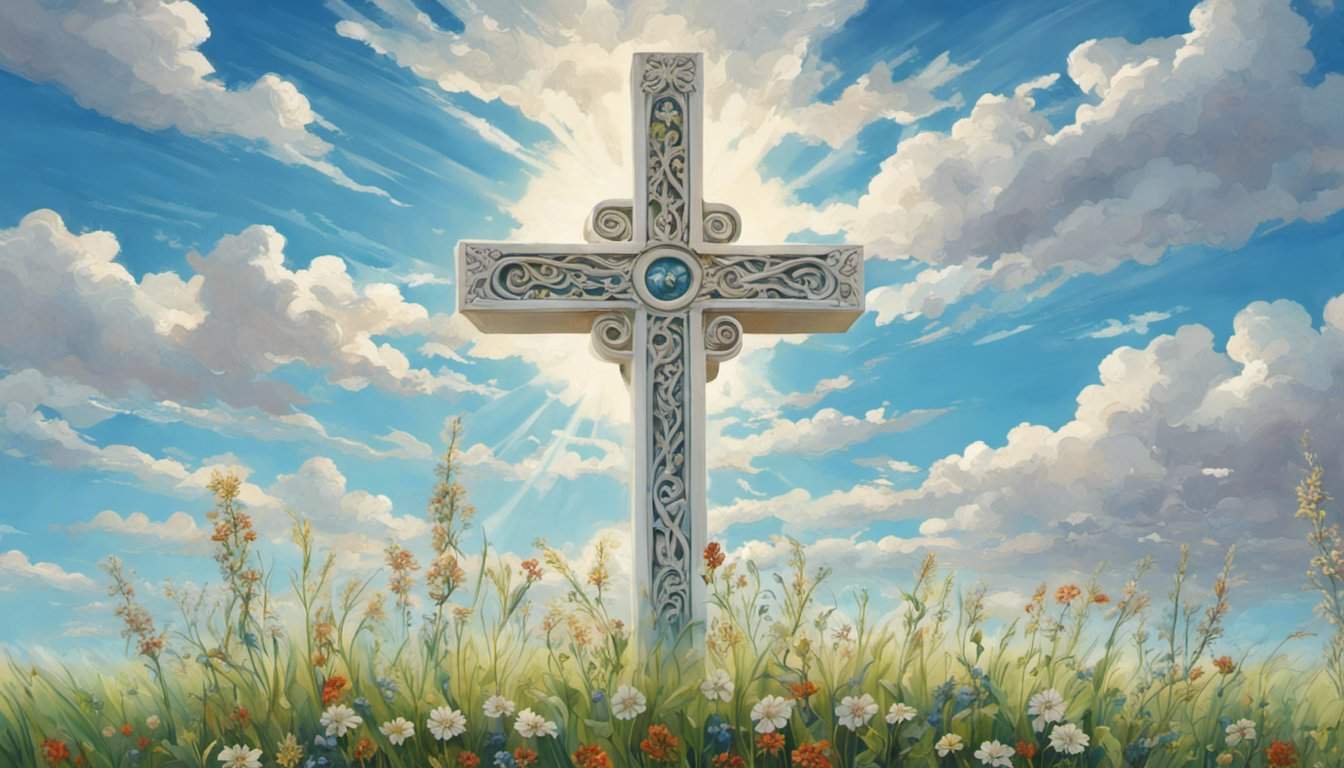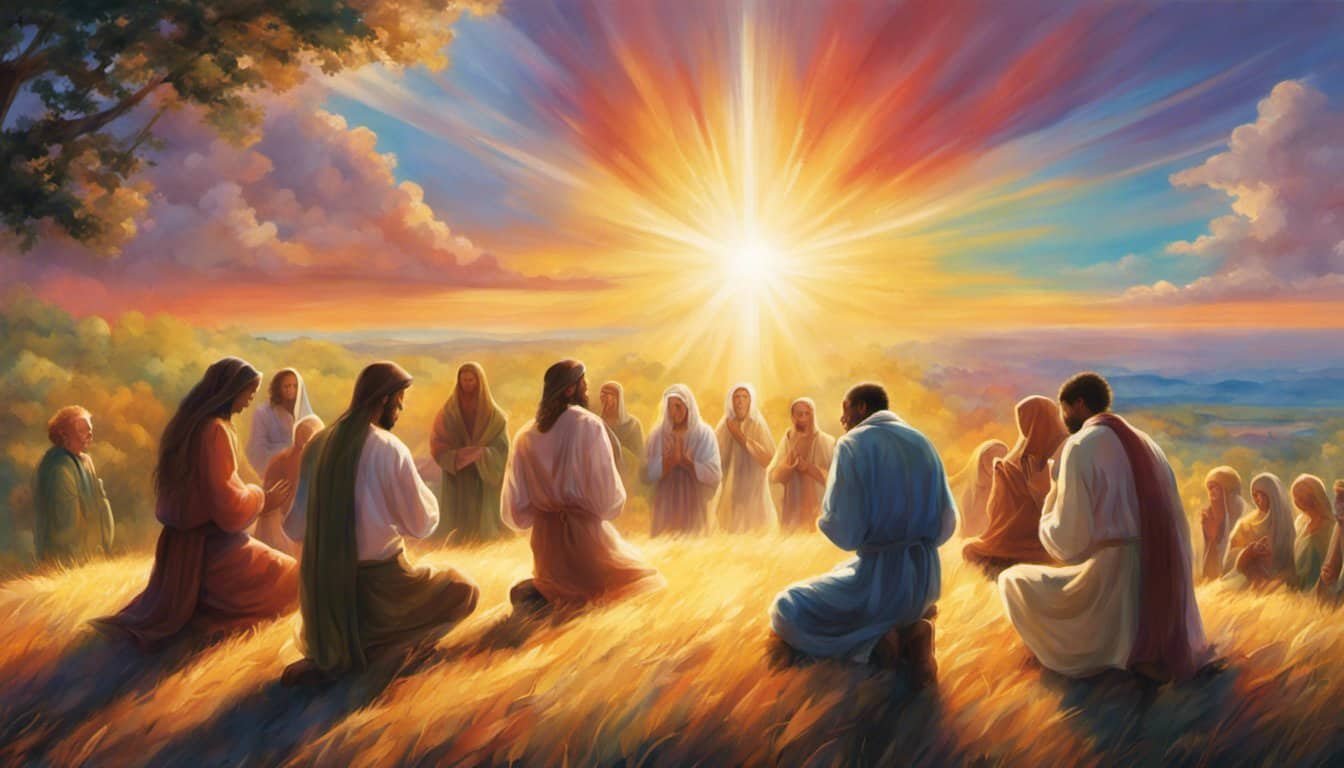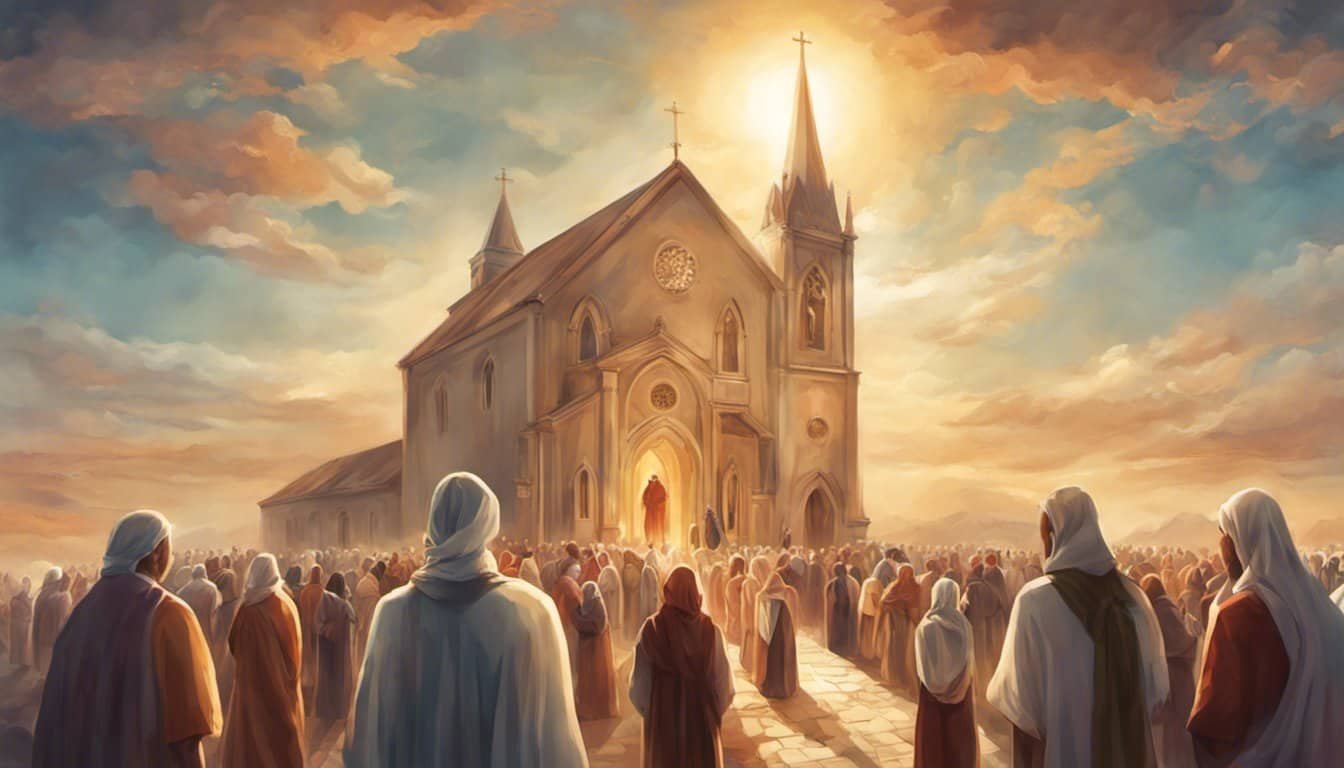For centuries, depictions of Jesus Christ have portrayed him with long hair, but did he really have long locks? The question has sparked a fascinating debate with a variety of religious and cultural nuances. In this article, we’ll explore the historical origins of this iconic representation and decipher the intricate symbolism behind it. Discover how artistic depictions and biblical narratives have influenced modern-day interpretations of Jesus and his appearance. Read on to learn more about the significance of Jesus’s hair length in religious traditions and cultural symbolism.
The Long Hair Debate: Historical and Cultural Context
The question of whether Jesus had long hair is a topic that has been debated for centuries. While it may seem like a trivial matter, the length of Jesus’s hair has different meanings in various cultural and religious beliefs.

In the time period when Jesus lived, it was common for men to have longer hair. Short hair was considered a sign of a lack of masculinity, and having long hair was often associated with strength and virility. However, this cultural norm changed after the Roman Empire came to power. The Romans saw long hair as a sign of barbarism, and so many men began to cut their hair short to conform to Roman cultural standards.
It is generally accepted that the portrayal of Jesus with long hair began around the 4th century, when Christian art had become more popular. The long hair iconography of Jesus was likely influenced heavily by depictions of other biblical characters, such as Samson, who is famous for his long hair and incredible strength.

Symbolically, long hair has been associated with spiritualism and transformation throughout various religions and cultural practices. For example, in Hinduism, long hair is seen as a symbol of spiritual strength and divinity. In Native American culture, long hair is believed to be the physical manifestation of thoughts and spiritual energy. In Christian art, the long hair of Jesus is often seen as a symbol of his divinity and purity, highlighting his position as the son of God.
Additionally, the length of Jesus’s hair has been used to differentiate him from the rest of the figures in the art. In traditional Christian art, Jesus is often depicted with long hair, while the apostles and other figures have shorter hair. This differentiation has been used to emphasize the unique position of Jesus as the messiah and son of God.
In conclusion, while there is no concrete evidence stating whether Jesus had long hair or not, the long hair iconography has become an important symbol in various religious and cultural traditions. The portrayal of Jesus with long hair began as a result of cultural practices and artistic depictions, but has since become an important symbol of divinity and purity in Christian art.
Religious Iconography and Visual Representations of Jesus Christ
The visual representation of Jesus Christ has gone through numerous changes throughout history. From ancient paintings to modern-day movies, there have been many portrayals of the Messiah, with one recurring debated aspect being his hair length. This section will take a closer look at the role of hair in the iconic representation of Jesus in religious art and cultural beliefs.
In traditional depictions of Jesus, he is often shown with long, flowing hair. Biblical figures had specific cultural standards and traditional portrayals, and many believe that Jesus would not have resembled the long-haired iconography of Jesus that is now traditionally depicted in religious art. However, many artists have taken poetic license to create different artistic interpretations of Jesus, in reflection of their own cultural practices and traditions of Christianity.
Despite this, the visual representations of Jesus typically feature long hair which represents spiritual symbolism. In the biblical stories and gospel accounts, hair length is linked to the character’s strength and righteousness. In the book of Judges, Samson’s hair gave him extraordinary strength, and in 2 Samuel, Absalom’s hair symbolizes his pride and eventual downfall. The long hair of Jesus in traditional representations thus serves as a symbol of his divine power and connection to God as the Messiah.
Throughout religious history, hair length has been an essential aspect of the iconography of Jesus. In early Christian art, hair length was a symbol of holiness and divinity. However, during the Byzantine period, it was reinterpreted as a symbol of youth and beauty. Even in contemporary interpretations of the iconic figure, the portrayal of Jesus is often couched in the cultural norms and traditions of the community where the artwork is produced.
Despite the popularity of the image of Jesus with long hair, there is no concrete evidence that supports this visual representation historically. In fact, it is a contested topic, and there is a debate among scholars regarding Jesus’s actual physical appearance. As a result, some biblical scholars argue that the long-haired Jesus is purely a product of artistic license and does not reflect an accurate portrayal of Jesus.
In conclusion, the long hair of Jesus in religious iconography and visual representation has been an essential aspect of the Messiah’s portrayal. Symbolically, it represents divine strength, youthfulness, and beauty. However, as debates continue over the historical and cultural accuracy of Jesus’s appearance, interpretations of hair length are constantly evolving.
Symbolism of Long Hair in Biblical Narratives and Religious Traditions

Long hair is a topic that has been debated for centuries, especially concerning biblical figures. In religious iconography, the representation of long hair has gained significant importance over the years.
Long, flowing hair is often associated with spirituality, freedom, and strength. In the Bible, it is mentioned that Samson had long hair, which symbolized his strength and his vow to God. Similarly, the story of Absalom indicates that his beauty was enhanced by his long hair as he devoted himself to God in his father’s rule.
In the New Testament, the appearance of Jesus Christ was not described in detail; however, sometimes, artistic interpretations present him with long hair. It is believed that his long hair represented his holiness and divinity.
Moreover, the symbolic meaning of long hair can also be found in cultural beliefs and practices. In ancient Greece, long hair represented aesthetic beauty, while in Rome, short hair was considered professional. In the Middle East, long hair was regarded as a symbol of power, while in China, it was believed to be a sign of wisdom.
Traditionally, depictions of Jesus in religious art portray him with long hair, which provides an important iconography of Jesus. The long hair was a sign of his divinity and set him apart from other biblical characters. Artists have used this representation of Jesus as a means of reinforcing his holiness and his message to the followers.
In contemporary times, there are debates regarding the appearance of Jesus and its relevance. While some argue that his physical appearances have little importance, others suggest that the representation of Jesus in religious art should be accurate.
To sum up, the symbolism of long hair in biblical narratives and religious traditions is significant and meaningful. It represents strength, spirituality, and holiness. Its representation in religious art is important to reinforce the message of the gospel accounts and the divinity of Jesus Christ.
Artistic Depictions of Jesus and his Hair Length in Christian Art
Throughout history, artists have used their skills to create representations of Jesus Christ through religious art. One of the most notable features that artists focus on is Jesus’s long hair, which is a debatable topic. In traditional Christian art, Jesus is depicted with long and flowing hair that extends past his shoulders.
The iconography of Jesus with long hair dates back to the early Christian era, where cultural standards dictated what a man’s appearance should be. During that time, men with long hair were seen as powerful and authoritative figures, and this cultural standard was incorporated into religious iconography. Over time, the portrayal of men with long hair became symbolic of spiritual symbolism and religious beliefs.
As a result, artists who wanted to convey a sense of divinity turned to the biblical narratives and gospel accounts to create traditional depictions of Jesus with long hair. They took inspiration from other biblical characters, such as Samson and Absalom, who were also described as having long hair, and incorporated that into their artistic interpretations.

The depiction of Jesus with long hair persisted in Christian art, despite the changing cultural norms and practices. In most of the traditional portrayals, Jesus’s long hair is depicted as a sign of his humility and spiritual purity. It is also a symbol of his role as the messiah and the chosen one.
However, in recent times, there have been debates and interpretations about the appearance of Jesus and his hair length. Some scholars and researchers believe that Jesus would not have had long hair, given the cultural practices and traditions of the time. Some even go as far as to say that Jesus’s hair length is not significant and that the focus should be on his teachings and message.
Despite these interpretations and debates, the artistic depictions of Jesus and his long hair in Christian art remain an important part of religious symbolism and cultural norms. They are a reminder of the religious traditions and historical context that shaped our understanding of Jesus and his message.
The Significance of Hair Length in the Representation of the Messiah in Religious History
In many cultures, hair length has been used as a symbol of power, status, and spirituality. This is particularly true in religious art, where depictions of biblical figures often link physical appearance to spiritual qualities. And perhaps no figure in religious history has been more closely tied to the symbolism of hair than Jesus Christ.

Throughout the history of Christianity, long hair has been a traditional signifier of holiness and divinity. Many artistic depictions of Jesus show him with flowing locks, often flowing behind him as he performs miracles or delivers sermons. This symbolizes his connection to the divine realm and his heightened spiritual awareness. Moreover, long hair is often associated with youth, vitality, and charismatic energy, all of which were qualities that Jesus was believed to embody.
This symbolic association between hair length and spiritual power has its roots in biblical stories and religious traditions. One example is the story of Samson in the Old Testament. According to the Bible, Samson was granted extraordinary strength by God, but only as long as he did not cut his hair. When he finally did cut his hair, he lost his strength and was captured by his enemies. This story reinforced the idea that hair length was linked to spiritual power and divine favor.
In addition to its association with holiness, long hair has also been linked to rebellion and nonconformity in many cultures. In Jesus’s time, short hair was often seen as a sign of obedience to imperial Roman standards, while longer hair was associated with resistance and rebellion. By growing his hair long, Jesus was symbolically rejecting the cultural norms of the time and asserting his independence and individuality.
Today, debates about the historical appearance of Jesus continue to rage. Some scholars argue that his hair would have been short and neatly trimmed, in keeping with standard Jewish cultural practices of the time. Others believe that the biblical accounts of his long hair are accurate, and that he would have been a spiritual outlier who rejected the conventions of his culture and time.
Despite these debates, the symbolism of long hair remains a powerful element in Christian iconography and religious art. Whether Jesus had long hair or not, he has been consistently portrayed with flowing locks for almost 2000 years, and this visual representation has come to symbolize his connection to the divine and his spiritual power.
Contemporary Interpretations and Debates on the Appearance of Jesus

Contemporary debates on the appearance of Jesus often focus on whether or not he had long hair. Some people argue that Jesus’s hair was not long because it would have been culturally inappropriate for him to look like a Nazirite, a Jewish person who took a vow of separation from alcohol, cutting hair, and other typical aspects of daily life.
Others believe that Jesus’s hair would have been long because it was the cultural norm for men at the time. In fact, traditional portrayals of biblical figures almost always depict them with long hair. Additionally, according to gospel accounts, when Jesus was crucified, soldiers cast lots for his clothing. This suggests that Jesus’s clothes were valuable, indicating that he may have been well-off and able to maintain a longer hairstyle that required more upkeep.
Despite these historical and cultural arguments, there is still no definitive answer to the question of whether or not Jesus had long hair. Many contemporary interpretations of Jesus’s appearance acknowledge that physical descriptions of him are not provided in the Bible. Instead, artistic depictions of Jesus, both historical and modern, offer visual representations that are based on personal interpretations of his appearance.
In contemporary times, some individuals believe that it’s not important to focus on the physical appearance of Jesus at all. Instead, they argue that his teachings and the message of Christianity are what truly matter. Regardless of whether or not Jesus had long hair, he remains an important figure in religious history and cultural traditions.














